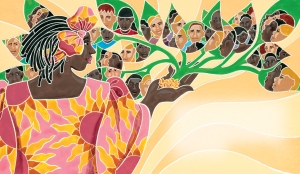Jill Eisenberg, our Resident Literacy Expert, began her career teaching English as a Foreign Language to second through sixth graders in Yilan, Taiwan as a Fulbright Fellow. She went on to become a literacy teacher for third grade in San Jose, CA as a Teach for America corps member. She is certified in Project Glad instruction to promote English language acquisition and academic achievement. In her column she offers teaching and literacy tips for educators.
In honor of Wangari Maathai’s birthday on Tuesday, April 1 and Earth Day, we at Lee & Low Books want to share all the fantastic resources and ideas that are available to educators who are teaching about Wangari Maathai’s legacy and using Seeds Of Change: Planting a Path to Peace.
Elementary School:
- Seeds Of Change made Reading Is Fundamental’s 2011-2012 Multicultural Booklist. The amazing staff at RIF has put together extensive guides for educators, families, and community coordinators to scaffold vocabulary, extend knowledge, and apply S.T.E.M. concepts.
- School Library Journal’s Curriculum Connections features a lesson plan using Seeds Of Change to explore what it means to be a global citizen.
- Kid World Citizen shows teachers how to teach cause and effect with Seeds Of Change.
- Lee & Low Books’ teacher’s guide includes teaching tips, interdisciplinary activities, and a range of literal to inferential questions.
 Middle School and High School:
Middle School and High School:
- After introducing Wangari Maathai with Seeds Of Change, delve deeper with the Speak Truth To Power human rights education curriculum, a project of the Robert F. Kennedy Center for Justice and Human Rights. They present an in-depth exploration on Wangari Maathai, the Green Belt Movement, and sustainability issues.
- In teaching standard 7 of the ELA Common Core, have students evaluate how Wangari Maathai is presented in a documentary compared to the Seeds Of Change biography. The documentary on Wangari Maathai and the Green Belt Movement, Taking Root: The Vision of Wangari Maathai, contains a classroom section full of video modules, handouts, and lesson plans.
What did we miss? Let us know how you are using Seeds Of Change in your classroom!










